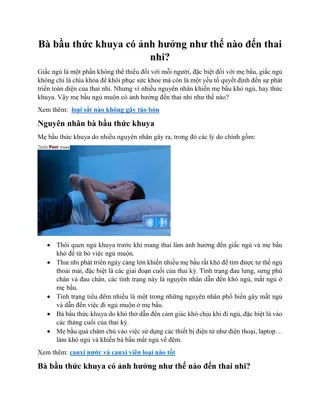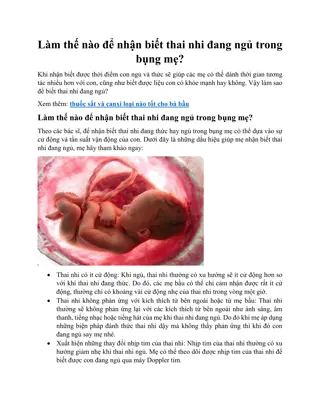Exploring the Fascinating World of Photophysics and Luminescence
Dive into the intriguing realm of photophysics, where various emission and loss processes lead to luminescence phenomena such as fluorescence, phosphorescence, and chemiluminescence. Discover the beauty of bioluminescence in nature, from fireflies to bioluminescent red tide events. Explore the mechanisms of fluorescence and phosphorescence, shedding light on Jablonski phosphorescence and the fascinating nature's fluorophore GFP found in Pacific jellyfish.
Download Presentation

Please find below an Image/Link to download the presentation.
The content on the website is provided AS IS for your information and personal use only. It may not be sold, licensed, or shared on other websites without obtaining consent from the author. Download presentation by click this link. If you encounter any issues during the download, it is possible that the publisher has removed the file from their server.
E N D
Presentation Transcript
Chapter 3 Photophysics
Emission and loss processes: Several of pathways for loss of electronic excitation shown in Fig. as a emission of light as luminescence
The individual luminescence phenomena are named according to the mode of excitation of the energy-rich species. Emission from species excited by absorption of radiation is referred to fluorescence or phosphorescence Emission following excitation by chemical reaction (of natural or changed species) is chemiluminescence.
Bioluminescence Lampyris noctiluca Artistic rendering of bioluminescent Antarctic krill (watercolor by Uwe Kils) Fireflies Artistic rendering of bioluminescent Antarctic krill Firefly luciferin H O S S N N OH Oxyluciferin Firefly luciferin
Image of bioluminescent red tide event of 2005 at a beach in Carlsbad California showing brilliantly glowing crashing waves containing billions of Lingulodinium polyedrum dinoflagellates. The phenomenon is thought to have something to do with quorum sensing. Image of bioluminescent red tide event of 2005 at a beach in Carlsbad California showing brilliantly glowing crashing waves containing billions of Lingulodinium polyedrum dinoflagellates
Nature's Fluorophore (GFP) O Gly-67 O Tyr-66 N H N O H N O H N H O H O H O O H O OH NH NH Ser-65 -H2O O O N O2 N + N O H H O N O H O NH H O NH H O Fluorophore (absorb = 397nm, emit = 509 nm) Aequorea victoria (Pacific jellyfish)
If emission of radiation continued after the exciting radiation was shut off, the emitting species was said to phosphorescent, while if emission appeared to cease immediately, then the phenomenon was one of fluorescence.
In 1935, Jablonski phosphorescence was emission from some long-lived metastable electronic state lying lower in energy than the state populated by absorption of radiation.This long-lived metastable state is now known to be the first excited triplet in many cases where the ground state of a molecule is a singlet. The long lifetime of the emission is a direct consequence of the forbidden.
Absorption and emission pathways McGarvey and Gaillard, Basic Photochemistry at http://classes.kumc.edu/grants/dpc/instruct/index2.htm Dr. Suzan A. Khayyat 9
Fluorescence, Phosphorescence and Chemiluminescence There are three main types of cold light reactions in chemistry which are often confused but are in fact very different. It is important to make sure that you know the difference.
Fluorescence is the emission of light by a substance that has absorbed light or other electromagnetic radiation of a different wavelength It is a form of luminescence. In most cases, emitted light has a longer wavelength, and therefore lower energy, than the absorbed radiation. However, when the absorbed electromagnetic radiation is intense, it is possible for one electron to absorb two photons; this two- photon absorption can lead to emission of radiation having a shorter wavelength than the absorbed radiation. The most striking examples of fluorescence occur when the absorbed radiation is in the ultraviolet region of the spectrum, and thus invisible to the human eye, and the emitted light is in the visible region. Fluorescence has many practical applications, including chemical sensors (fluorescence spectroscopy), fluorescent labelling, dyes, biological detectors, and, most commonly, fluorescent lamps.
Fluorescence occurs when an orbital electron of a molecule, atom or nanostructure relaxes to its ground state by emitting a photon of light after being excited to a higher quantum state by some type of energy: Excitation: : Fluorescence (emission): h is a generic term for photon energy with h = Planck's constant and = frequency of light. (The specific frequencies of exciting and emitted light are dependent on the particular system.) State S0 is called the ground state of the fluorophore (fluorescent molecule) and S1 is its first (electronically) excited state.
Phosphorescence light is absorbed by a molecule which becomes excited to a higher singlet state. The light can either be re- emitted straight away or (very-rarely), the electron can switch to a triplet state (this is technically forbidden but can happen often enough through a process known as intersystem crossing). Transitions between different multiplicities are forbidden by quantum selection rules and as the ground state of the molecule will often be a singlet state (recall all closed shells are singlets), the molecule is not allowed to emit a photon that will get it directly to the ground state. The molecule must wait a long time (in quantum chemistry) until it can make the forbidden transition.
What is Chemiluminescence? Chemiluminescence is the production of light from a chemical reaction in excess of the black body radiation expected from that body. As such, it is often referred to as cold light . Normally, chemiluminescence involves the production of an electronically excited species from a number of reactants which goes on to release visible light in order to revert to its ground state energy.
The mechanism for this reaction is outlined extensively throughout this site but the key difference to note is that no radiation is absorbed the energy required to emit light comes from the energetics of the chemical reaction. The emission could proceed either from a singlet (fluorescence) or triplet (phosphorescence) state. "Light Sticks" are a popular example of Chemiluminescence
Emission of electromagnetic radiation, usually visible light, caused by excitation of atoms in a material, which then reemit almost immediately (within about 10 8 seconds). The initial excitation is usually caused by absorption of energy from incident radiation or particles, such as X-rays or electrons. Because reemission occurs so quickly, the fluorescence ceases as soon as the exciting source is removed, unlike phosphorescence, which persists as an afterglow. A fluorescent light bulb is coated on the inside with a powder and contains a gas; electricity causes the gas to emit ultraviolet radiation, which then stimulates the tube coating to emit light. The pixels of a television or computer screen fluoresce when electrons from an electron gun strike them. Fluorescence is often used to analyze molecules, and the addition of a fluorescing agent with emissions in the blue region of the spectrum to detergents causes fabrics to appear whiter in sunlight. X-ray fluorescence is used to analyze minerals.























